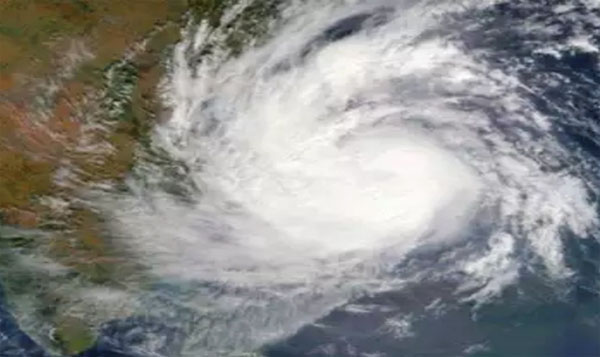DAE estimates Tk 387cr worth crops loss in Midhili
Emran Hossain
With another cyclonic storm brewing in the Bay of Bengal, the third one in a little over a month, farmers on Bangladesh’s coast are busy harvesting their partially ripened crops, potentially losing their expected production significantly.
The Department of Agricultural Extension completed its assessment of agricultural losses from the last cyclonic storm, Midhili, which made landfall on November 17 along the southern coast, affecting 292,419 farmers in 16 coastal districts.
While the DAE estimated the crop loss to be worth more than Tk 387 crore, vast stretches of crop fields lay submerged in water until Tuesday in the coastal region, providing a gleaming example of how destructive even a small cyclonic storm could be for poor farmers.
The cyclonic storm Midhili was dubbed an insignificant cyclonic storm that moved onto land just hours after it was born.
The crops in many coastal fields, mostly aman paddy, the second most important rice crop, are not ripe and ready to be harvested, leaving many farmers in a precarious situation.
‘The problem is that 70 per cent aman is not ready to be reaped yet,’ Showkat Osman, the chief of the Barishal regional office of the DAE, told New Age.
Aman was grown on more than 700,000 hectares of land in the Barishal region, he said.
Agricultural extension officers in the coastal region have been advising people over the past four to five days, often sending teams with loudspeakers, to harvest their crops as soon as possible with a cyclonic storm likely by December 2.
Barishal, Bhola, Patuakhali, and Barguna emerged as the worst-affected areas in the cyclonic storm Midhili, accounting for more than 60 per cent of agricultural losses estimated by the DAE in 16 coastal districts.
A total of 21 crops were cultivated on 16.26 lakh hectares in the affected coastal region, with the Midhili affecting 243,294 lakh hectares, more or less, according to the DAE.
Five per cent of aman paddy fields were affected by Midhili, affecting 163,449 farmers, according to the DAE.
The crops that were mostly affected are maize, vegetables, mustard, soybean, lentil such as grass pea, onion, and chilli, according to the DAE data.
The DAE estimate of disaster losses usually underestimates the actual loss to show the low demand for helping farmers.
Farmers are not insured, and the help the government provides to them is minimal.
‘The affected farmers will be prioritised in the future distribution of subsidised seeds,’ said Badal Chandra Biswas, director general, DAE.
The supply of subsidised seeds and fertilisers amidst frequent natural disasters helps farmers very little, particularly because of their wretched conditions with many cultivating crops with high-interest loans.
Coastal farmers could have taken home an increased aman harvest had they been able to plant the crop in time, the DAE officials said.
The deadline for planting aman in the coastal region is the second week of September, which could not be followed this year because of water stagnation from unusually heavy rain in August.
Many farmers in Barishal, Barguna, Bhola, and Patuakhali planted aman on September 28, still in fields sunk in knee-deep water, according to local DAE offices.
Coastal farmers are not alone in touch time. In the northern region, farmers had to put up with waves of flash floods during the cultivation of boro, the main rice crop.
The area over which the potential cyclone is getting into shape has a reputation for developing strong cyclones, often taking the direction of hitting the southern Bangladesh coast, independent forecasters said.
On Tuesday, the India Meteorological Department warned that the low-pressure area over the South Andaman Sea kept intensifying and was likely to turn into a cyclonic storm by December 2.
Besides causing agricultural losses, cyclone Midhili killed at least 10 people.
Cyclone Hamoon, which hit on October 24, affected 50,000 farmers in Cox’s Bazar district.

